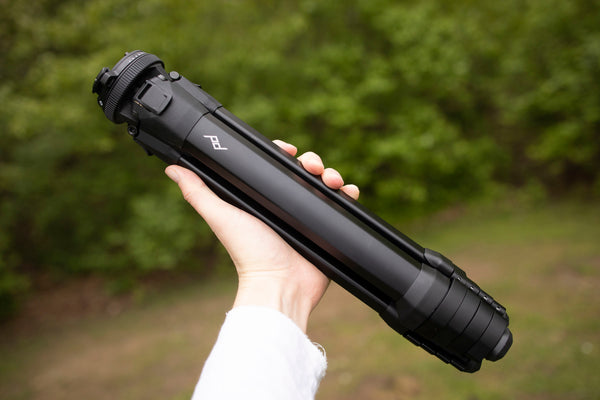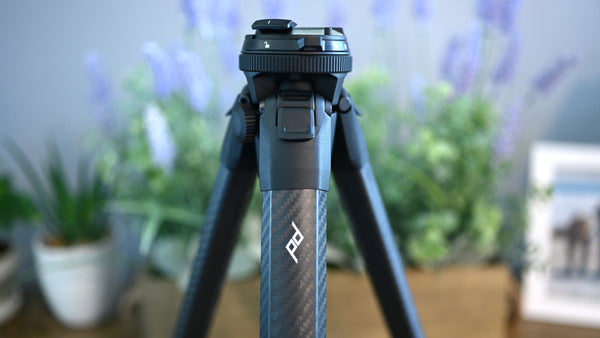
Introduction
The Peak Design Travel Tripod was released in December 2019 and received a huge amount of attention for its efforts to redesign the conventional tripod frame into a more economic, practical and portable system that reduced overall footprint whilst maintaining stability and ease of use. Despite being highly tempted by the new offering, the Beyond Visuals team held off purchasing for a few months, deciding to garner more information from reviews and user feedback before parting with our cash and, around a month or two ago, Martin and I both decided to take the plunge and purchase the Peak Design Travel Tripod Carbon Fiber edition. Having used the product for the past few weeks, we've collected some of our own thoughts that may help you in deciding whether or not you want to add one to your kit bag.
Before we dive in to the details though, in typical Beyond Visuals fashion let's have a quick look at the reasons you may want to use a tripod for your photography:
2. Low light/night photography
3. Panning shots
4. Supporting heavy equipment
5. Compositing
6. Telephoto shots
7. Timelapsing/videography
Other uses for your tripod may also include the following:
8. Defense against particularly aggressive swans
9. Substitute baseball bat
10. Imaginary friend (ours is Pete, the PD tripod)
11. Portable bag hanger (in COVID-19 times especially to prevent touching places people sit on)
Now that we've recapped those important points, let's have a look at whether or not the PD tripod is one that you'll actually want to buy and use as part of your camera gear line up.

Verdict: The Perfect Answer to the Question: Do I Really Need To Bring My Tripod?
If you're a photographer or videographer heavily devoted to one of the eleven tripod usage situations above (maybe not the last four), then the Peak Design tripod isn't the one for you...or, to be more precise, it IS the tripod for you, just not the only tripod you should have. By this we mean, if for example, you're heavily invested in landscape or night photography, it's your raison d'être, the last thing you go to bed thinking about and the first thing you think of when you wake up etc., you should consider investing in a high-quality, sturdy and functional tripod devoted to giving you the best images and experience you can possibly get for your usage. The Peak Design tripod is ultimately a travel tripod - it will tick off a lot of boxes, but not all of them, and for this reason we'd recommend it to be one of the tripods you have in your gear, but not the only one.
So who (or what) is the PD tripod really for? For us it's the perfect answer to the question of 'do I really need to bring my tripod?' By this we mean, you know the last few minutes before you leave your house to set off on a new photography adventure where you're scrambling to pack the final bits of your gear into your increasingly burgeoning kit bag and you look down at the mess of lenses, camera bodies, filters remotes and think....'should I take a tripod?' Well, if it's the PD tripod the answer is definitely yes. It's light and compact enough that you won't regret having it with you even if you don't actually use it, but sturdy and practical enough that you'll pretty much get the results you want if you do. If you know that you'll need a tripod, and that you'll be using it a lot (in certain situations), certain aspects of the PD tripod may end up being more of a hindrance than a help. Here's a list of advantages and disadvantages that we've observed:
Advantages:
1. Incredibly light and compact - the carbon fiber version weighs in at only 2.81 pounds, and it can fold up to (more or less) the size of a 750ml plastic bottle.
2. Cross compatibility with other PD products - e.g. if you have the base plates, straps or other accessories, it makes transition between them almost seamless.
3. Super fast to set up - the fact that the design does away with the traditional legs folded up around the central column set up means that it can be deployed very quickly. The leg clamps also allow for fast set up.
4. Easily adjustable head and locking system - super easy to get used to and quick to rotate and lock when needed.
5. Carry case is easily attachable and doesn't compromise portability - not a super important advantage, but nice to have.

Disadvantages:
1. Price - $600 USD for the carbon fiber model? Ouch.
2. Stability - It's light. Very light. That means it's not going to be as stable as some of the heftier tripods out there. Of course, there is a hook attachment to the base column where you can add additional weighting when needed, but it will most likely be limited. The compactness also means that there is some flex in the legs, especially if you're using particularly heavy equipment.
3. Tripod head - Rotation in to portrait mode isn't as easy or fast as it should be, with the head of the tripod not really allowing for free movement to set up your camera in portrait mode. You also have to lift the ballhead to be able to rotate it in the first place, which can be a bit of a pain at times. We recommend combining it with a standard L-bracket, and using that for portrait mode when needed.
4. Price - did we mention this already? Ouchie.
There you have it, everything you need to help you with your purchase decision. If you want to purchase it you can grab yours from Amazon, or the PD website. If you've decided that this tripod isn't the one for you, we suggest that you check out other brands like Gitzo, Manfrotto, 3 legged thing and RRS that may be able to offer you something more in line with your photography needs - although Gitzo also costs a fortune (ouch).
Thanks for reading and we'll catch you in the next post.
The Beyond Visuals Team 
